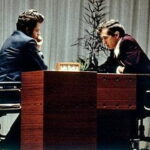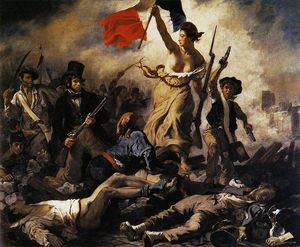For someone who has been at the game of chess for a couple of decades and a few tournaments to his pocket, I think I am good enough to hand out some tips on playing the game. They may not be the best tips in the world but are good enough to get into tournament shape.
The game of chess can be broken down into three sub-games or phases: the Opening, the Middle game and the End game. Each has its own importance in the overall game play and a novice has to master each phase to get into tournament shape. There is no defined line demarcating the opening from the middle or the middle from the end. The end game is when the board is practically devoid of many pieces and there is plenty of room to move around.
It is in a strong opening that a player establishes his or her supremacy. For instance for a player who opens by moving any of the side pawns has a risk of early defeat. The two KB2 (f2/f7) places are the weakest point in the kings side till such time that he castles. So it is better to move the middle pawns first. And move your pawns so that the minor pieces like the bishops and the knights have lines to develop. The KP or the QP are the best to move first, they allow the development of the Bishops.
The defense of the King is of the utmost importance. And what better haven for a King than when He is castled. As such it is better to castle as early as possible. The Grandmaster Richard Rei said “You should castle when there is no better move.” And when you castle, it is usually considered to castle on the King’s side rather than the Queen’s side unless there is going to be a positional advantage, but it takes longer to castle on the Queens side. Another important point to remember is that when you castle, touch the King first. If you happen to touch the Rook, then, according to FIDE rules, you have to move the Rook first, if it is legally possible. You are not allowed to castle on that move.
When you do the castling on the Kings side do a “fianchetto” before you do the actual castling. A “fianchetto” is the development of any of the two Bishops and the three side pawns so that the Bishop takes control of the center diagonal.
It is always better to develop the Knights before you begin to develop the Bishops except in the case of an early fianchetto. And when you develop the Knight see that it has maximum control. For example a Knight on QR3(a3) or KR3(h3) controls only four squares whereas a Knight on QB3(c3) or KB3(f3) controls eight squares (occupied or unoccupied). Try to develop the Bishops such that either or both of them control the center diagonals.
For a beginner there is always the question “Which is better, to attack or to defend?” This is not a simple question to answer as it depends on the attitude of the player and the way the game is developing. For an attacking player the recommended openings would be the KP Evans Gambit the QP Four Pawn Attack and the Staunton Gambit against the Dutch. The most popular openings are the Ruy Lopez and the Queen’s Gambit. Incidentally, a “Gambit” is a calculated move to sacrifice (generally) a pawn. And when Black does such a move it is called a “Counter Gambit”.
For a good tutorial on openings in chess I would recommend this site http://www.eudesign.com/chessops/
Next Comes the middle game which begins somewhere around twentieth move or so but not necessarily. This is where usually the attacks begin and where each player tries to get hold of as many pieces of his or her opponent. This is where tactics and strategies begin to come into play. Tactics are short term game plays whereas strategies are long term game plays. Each player tries to device tactics to capture his opponent’s pieces either free or by exchanging low valued piece for a high valued piece.
I have to digress here to put in a short note on what high and low valued pieces are. Speaking in relative terms with the pawn value as “1”, the Queen is worth 9½ pawns, the Knight and the Bishop as 3¼ of them (the pawns) and the Rook five of them. Personally, I would rate the Knights slightly higher than the Bishops but that also depends on the placement of the Knight and the Bishop on the board.
So in the middle game the main aim is to capture as many pieces of your opponent prevent him to capture yours. To that end, it is a good idea to keep your pieces safe and well guarded and look for those pieces of your opponent that are loosely guarded. How well you use your material is of the utmost importance in the middle game as it sets the board for the end game. The more material you have the more easier for you to win. But again, chess is not just a matter of more material but of tactics, strategies and positions and material.
This middle game is the place where the pins, the forks the tradeoffs take place. A pin is a situation where a piece is forced to stay in a place, thus making it ineffective. An example would be a Queen in front of the King either in the file or in the diagonal and pinned down either with a Rook or a Bishop. Forks are where two important pieces get trapped by a Knight and if one of the pieces happens to be the King, woe unto you. These are the situations that you should try to avoid.
Then finally comes the end game. Whether you win or force a draw depends both on the material that you have – here a passed pawn becomes very powerful, more so if it is backed by a Rook. If there is too much of material it may be said the middle game phase has still not passed. It is when the board looks like a desert that the end game has started. Depending on the material at hand either of the players can offer a draw and it may be accepted by his opponent or a draw may be forced. Draws can come about because of a “Stalemate” where either of the kings cannot make a legal move and there are no other pieces to move or can come about because of lack of material as in the case when there is only a minor piece or only two knights against the King. Three Knights against a King can force a win but this is a rare situation that can arise only if a passed pawn is promoted to a Knight, which no one will conceivably do. I do remember coming across a chess puzzle where the situation was such that three passed were promoted one after the other, in succession, into Knights and the third promotion results directly into a mate. There are, of course, other situations where a draw is forced.
One of the best ways to improve your chess play would be to follow the games of the great players. The term “great player” is also slightly ambiguous as there were great players at every stage of development of the game. As such, all good games are worth following.
Another way to improve your play is to get yourself a good Chess Software that plays in different levels, from a novice to an expert. Whatever level you may be you can start at that level and climb upwards. It is a bit difficult to beat a computer at the higher levels but it can be done. The only irritating factor while playing with against a computer at the higher levels is that the computer takes an inordinate amount of time to give its move and you have to have the patience to wait for the move.
A third way is to get a good book on playing chess where the games of others are analyzed in detail, but you have to understand chess notation, both the classic and the algebraic to understand the book.
These are some of the ways to better yourself at the game of chess. They cannot be the ultimate as no two chess games are alike, but I believe that they are worth at least the paper that it is written on. Finally, to conclude – “Practice Makes Perfect”.
A good place to find some good advice on playing chess could be http://www.101chesstips.com .



